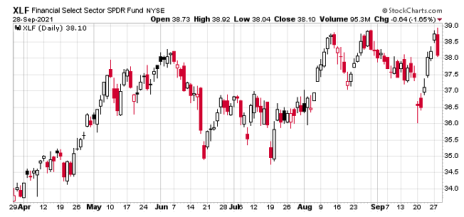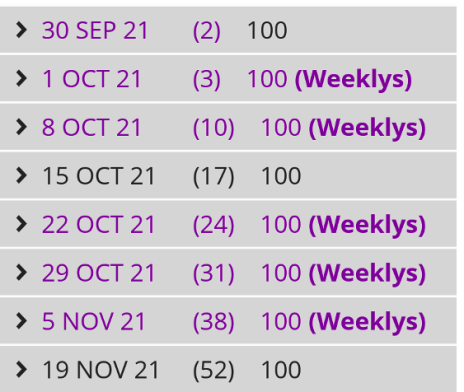If you’ve heard the options term strangle it’s likely not in reference to a covered strangle, but to a short strangle, which is an undefined risk option strategy that benefits when the asset of your choice stays between your short call and short put strike. In most cases, it’s a neutral strategy with a large price range for the underlying stock to move around in.
Short strangles have the potential to offer investors one of the highest probabilities on the market. If managed correctly, short strangles are an incredible strategy. But there is a downside to the strategy and one that can be a huge deterrent to many investors. The capital required can be steep, so it’s not surprising that most investors shy away. Plus, the thought of having undefined risk on both sides of a trade (call and put) can potentially lead to a few sleepless nights.
A covered strangle, on the other hand, offers an investor a completely different type of high-probability opportunity. A covered strangle is simply a covered call strategy coupled with a short put–or just buying a stock and wrapping a short strangle around it.
[text_ad]
Investors use a covered strangle when they wish to either lower the cost basis of their position or enhance the returns on a long position (stock or ETF). Either way, you also have the opportunity to buy even more shares at a price of your choosing. It’s a great income strategy to use on stocks you already own or wish to acquire.
But let’s go through an example to really get down to the nitty-gritty of how a covered strangle works.
SPDR Financial Sector ETF (XLF) – Covered Strangle
I’m going to keep it simple by using the SPDR Financial Sector ETF (XLF) for our covered strangle example.
With XLF trading for 38.10, we are going to buy 100 shares for $3,810.
Once we’ve purchased at least 100 shares we then will sell a delta neutral short strangle around the shares. Since XLF is trading for roughly 38, we will look to sell a short strangle that has a delta of roughly 0.10 to 0.30 for both the call and put.
Moreover, I will look to go out 20 to 50 days. My preference is to go with a shorter duration for my short strangle, but the amount of premium I can bring in will define my choice of expiration cycle.
Here are our choices for expiration cycles. I’m going to use the November 19, 2021 expiration cycle with 52 days left until expiration.
Once I’ve chosen my expiration cycle, I then must decide which strikes I wish to use for my short strangle.
On the call side:
We can sell the 40 call strike for roughly $0.52. The 40 call strike has a probability of success of 74.48%, or a delta of 0.28.
On the put side:
We can sell the 35 put strike for roughly $0.50. The 35 put strike has a probability of success of 76.07%, or a delta of 0.21.
The Trade
If you do not already have shares in your possession you will need to buy 100 shares of XLF for roughly 38.00, or $3,800
After shares are purchased, you will sell a short strangle against your shares.
Simultaneously:
- Sell out-of-the-money call
- Sell out-of-the-money put
Or…
Sell to open XLF November 19, 2021 40 call
Sell to open XLF November 19, 2021 35 call for a total credit of $1.02
Premium Return: $1.02 ($0.52 for the call + $0.50 for the put)
Breakeven Price: 36.98
Maximum Profit Potential: $302 ($40 short call strike – $36.98 breakeven) x 100 for a return of 8.17%
A Few Possible Outcomes
XLF Pushes Above Short Call Strike
If XLF pushes above the 40 short call strike, no worries, we get to keep the put premium of $0.50, the call premium of $0.52 and we make roughly $2 on the ETF. Overall, our gain would be $302, or 8.17% over 52 days.
XLF Stays Within the Range of 35 to 40
If XLF stays between our short put and short call we get to keep the entire premium of $1.02, or 2.76%, over 52 days. We can use the covered strangle strategy roughly seven more times over the course of the year for a total annual return (just premium) of approximately 19.3%.
Stock Pushes Below our Short Put Strike
If XLF pushes below our short put strike of 35 we still get to keep our overall premium of $1.02. However, we would be issued 100 shares of XLF for every put sold. Our breakeven on the newly issued shares would be $36.98, a discount of 2.68% from where the ETF is currently trading. Of course, if we do not wish to being assigned shares of XLF we can simply buy back our short puts.
In Summary
To sum up covered strangles, if you wish to enhance the return of a position, like XLF, consider this often overlooked, but highly flexible, options trading strategy. You start with the same exposure as a long stock and have protection if the stock moves above or below the stock price. And again, if the stock stays between the short put and short call, you will be rewarded with significantly more premium than with a standard covered call.
Have you ever tried a covered strangle? Tell us what other options strategies you like in the comments below.
[author_ad]




